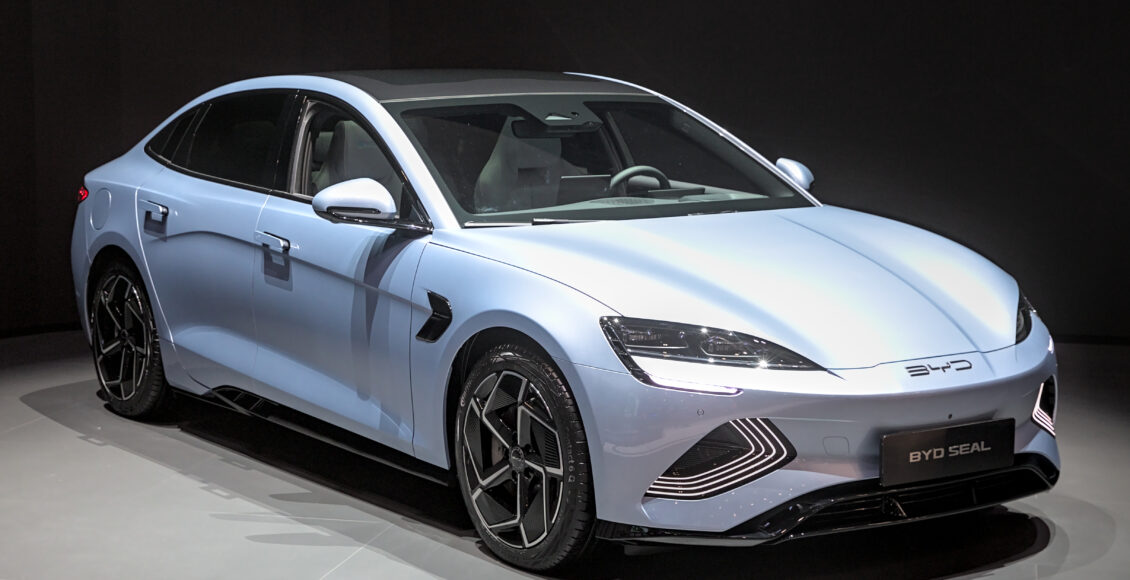China’s EV Industry vs. the World: What Western Tariffs Mean for the Future of Trade and Climate

BYD, Geely, GAC, SAIC. These are some of the biggest electric vehicle producers you’ve never heard of, and they’re all Chinese-owned companies. Chinese manufacturers produce more than half of the world’s electric vehicles (EVs) — critical to the global energy transition — and are cheaper than their competitors. In response, Western nations are increasingly trying to prevent them from entering their markets. This September, the U.S. finalized 100 per cent tariffs on Chinese EVs, along with tariffs on batteries, solar cells, and other crucial products in the renewable energy sector. This means imported EVs will be subject to a tax equal to their value. Canada followed suit, with 100 per cent EV tariffs coming into effect on October 1. Three days later, the EU pushed forward tariffs that came into effect on October 29 on Chinese electric vehicles up to 45.3 per cent following a politically contentious vote with 5 states voting against and 12 abstaining. How did Chinese EVs become so dominant to the point of Western tariffs, and what potential impacts might these tariffs have on the world?
How China Gained the EV Edge
Chinese EV production has grown massively over the past two decades largely because of a host of subsidies to the industry — primarily rebates and sales tax exemptions — estimated to total $230.9 billion USD in the years 2009-2023. Moreover, Chinese producers benefit generally from large economies of scale and cheap labour costs. China also dominates EV battery production, producing around two-thirds of the global supply, so Chinese manufacturers benefit from cheap domestic batteries. Chinese EVs manufacturers are producing so many EVs that they now have a massive surplus and are increasingly looking to export abroad, much to the chagrin of Western manufacturers. This oversupply has led to steep domestic EV price wars, which have significantly driven down EV prices in China. China’s market now accounts for 60 per cent of global EV sales, where domestic uptake has increased as EVs in China have become cheaper than gasoline-fueled vehicles.
Why Western Countries are Fighting Back
While Chinese investments have caused cheap EVs to proliferate, the U.S., the EU, and Canada all allege that China’s subsidies constitute unfair trade practices curtailing competition — with the tariffs coming on the heels of a 2023 EU anti-subsidy investigation into Chinese EVs. The U.S.’s steep tariffs are intended to protect American auto manufacturing and domestic jobs, an issue that has become increasingly salient in America’s protectionist political climate. Indeed, U.S. green investment under Biden has created over 84,000 jobs. Likewise, the EU imposed tariffs to protect the European car industry from the flood of cheap Chinese vehicles. Moreover, Western nations are concerned that Chinese EVs will be used for foreign surveillance, with high-tech software potentially being used for data collection or remote vehicle manipulation. Wary of Chinese technology, the Biden administration has proposed bans on Chinese software and hardware in connected vehicles by 2027.
The Impacts of EV Tariffs
The U.S. has been in a trade war with China since the Trump administration in 2018, which will likely escalate significantly under a second Trump term, so EV tariffs are not what will shift the needle on U.S.-China trade. However, the tariffs are more consequential for the EU: Europe is the second largest EV market after China. Although European tariffs are lower, it is China’s largest EV export market with 40 percent of its total exports, and the tariffs represent a significant departure from European free trade.
Moreover, while the stated aim of EU and Canadian tariffs is to protect domestic industry, given China’s retaliatory tariffs, it’s not clear that this will ultimately be the case. In response to Canadian tariffs, China shot back by announcing an anti-subsidy investigation into Canada’s canola industry, which could take a billion-dollar loss. In the EU, Germany voted against the tariffs after pressure from its auto manufacturers who worried that Chinese retaliation would shut them out of the world’s largest car market. China has since retaliated against Europe in a tit-for-tat response with provisional tariffs on brandy targeting France, a vocal proponent of the EV tariffs; and anti-subsidy investigations into billion-dollar pork and dairy exports. German economists are mixed on whether the tariffs are a net positive: retaliation may hurt European industries by making their products less competitive in one of the world’s largest consumer markets. While China likely wants to contain the EU conflict due to incoming U.S.-China frictions, negotiations underway have thus far seen little success with the EU rejecting a minimum price floor as an alternative to the tariffs.

As for the climate, road transport of gas-powered vehicles accounted for 11.9 per cent of global greenhouse gas emissions in 2020, representing around 5 billion tonnes of emissions per year. EV tariff policies will prevent the prices of EVs from becoming more affordable for customers in the West, as they remain significantly more expensive than internal combustion engine vehicles. While current Chinese EV market share in the U.S. is low, it would likely increase if not for 100 per cent tariffs. Tesla, which currently controls almost half of the American market share, lists its cheapest model for $38,990 USD. In April, it cancelled plans to bring a cheaper model to market at around $25,000 USD. A 100 per cent tariff all but guarantees that Chinese EVs will not be viable in the U.S. market, disincentivizing American carmakers from developing cheaper models in the absence of competition. In Europe, the average EV price is €66,000, out of reach for many consumers with cheap domestic models not yet on the market.

EV uptake was already lagging in Europe and North America before the tariffs, with EV sales in Europe in 2024 under 20 percent of total auto share, and even lower in the U.S. at a paltry 8.5 per cent in May. These tariffs represent a major roadblock to highly ambitious EU and Canadian targets for 100 per cent EV adoption by 2035 (or even the U.S.’s weaker 35 per cent adoption target) by preventing cheap EVs from entering the market. European automakers have already called for 2025 targets to be delayed as they are vastly underperforming and face hundreds of millions in fines due to low EV sales. Even Western manufacturers producing EVs in China will be subject to the tariffs, making it harder for European companies to bring cheaper EVs to market.
Takeaways
In the end, tariffs will make it difficult to achieve EV adoption targets in the West, critical in the fight against climate change. The calculus is difficult for these nations, especially given domestic protectionist considerations, but these, too, may be harmed by Chinese retaliatory tariffs and shifting Chinese investment. As for national security, greater vetting could mitigate risks, and it’s not clear how much riskier Chinese EVs are than software like Chinese-owned TikTok. So, who are the winners and losers in the EV dispute? The big winners are Hungary and Turkey, where China is now investing big to avoid European tariffs. The obvious losers are China, already with a shaky economy, and Western consumers who are currently priced out of EVs. But in the end, the biggest losers will be the citizens of the Global South, who will pay the price for climate change they didn’t cause. Negotiations between China and the EU are uncertain, but for the sake of global trade and the climate, we should hope they succeed — or if they fail, that trade frictions are at least contained. The U.S. and Canada could learn from a measured approach.
Edited by Hannah Lalonde
Featured image: BYD exhibits its mid-size sedan Seal model at the 2024 Geneva International Motor Show. “BYD Seal GIMS 2024” by Alexander Migl is licensed under CC BY-SA 4.0.
